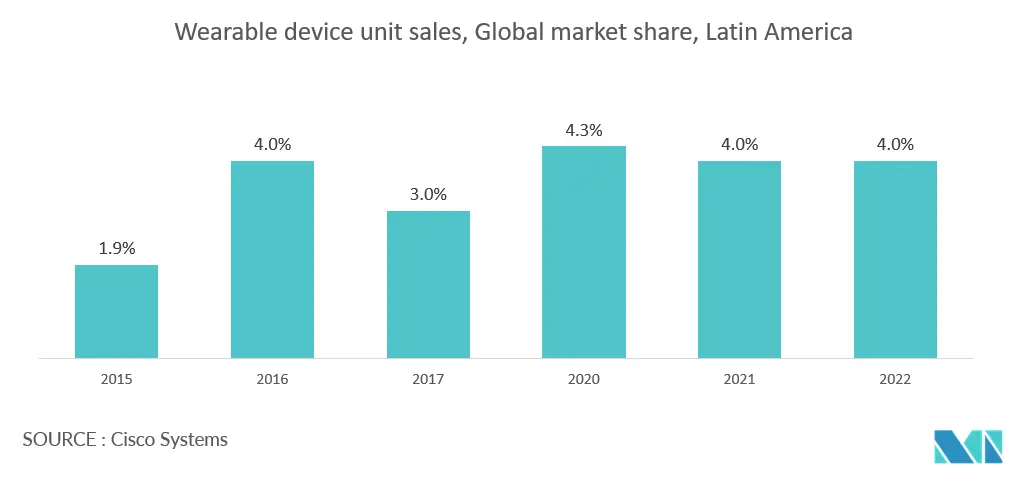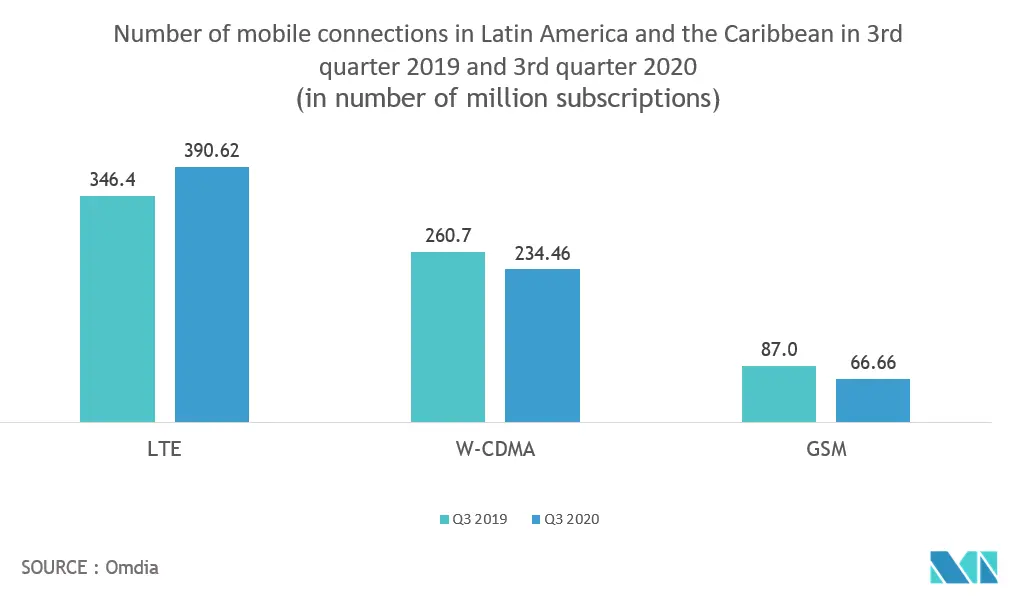Market Trends of LA Wearable Sensors Industry
This section covers the major market trends shaping the Latin America Wearable Sensors Market according to our research experts:
Increase in demand of wearable devices is driving the market
- The rising market of smartphones and tablets is enabling the integration of wearable devices with smartphones. The wristwear segment holds the majority of the market share and is anticipated to dominate the market during the forecast period.
- The introduction of smartwatches from companies like Samsung, Sony, and Nike, among others, has given a boost to this market. Latin America is expected to account for about 4% of the global market in 2022, mainly due to advancements in sensor technologies in the region.
- For instance, according to Cisco Systems, the unit sales of wearable devices in Latin America are expected to reach 39 million by 2021. Thus, the growing penetration of smart wearables in the region is further expected to create a demand for a more diverse set of wearables with temperature sensing capabilities.
- Also, the changing digital landscape in the Latin America region and mobile penetration contributes to the growth of wearables. For instance, according to GSMA, the number of mobile devices in Latin America is expected to reach 424 million by 2025.

High technological advancements in the region are expected to drive the wearable sensor market in Latin America
- Latin America is undergoing a technology boom, owing to the government’s emphasis on telecommunications and the Chinese investment in the region, especially in emerging technologies. With the economy of the region expected to be driven by Brazil and Argentina, consumer spending is also expected to increase further.
- Automotive and healthcare production substantiates the region’s demand for wireless sensors. The region lacks the local production of aerospace and military equipment and other industrial control systems.
- The Mexican industrial sector can be associated with the growing number of automotive manufacturing plants in the country. Companies like Intel that are focusing on the autonomous vehicle space are investing in Mexico, which is the sixth global car exporter. The company is planning to contribute significantly to autonomous passenger vehicles in the market by the year 2024. As TPMS is mandated across most of the regions, the demand for wireless sensors is significant.
- The rising GDP and the emerging middle class are also driving automotive sales in the Latin American region. Various automobile production plants are expected to provide significant opportunities for the wireless sensors market.


